Biology
Diet
Commercial scallops (Pecten fumatus) are filter feeders that sift plankton and detritus from the water column.
Reproduction
Scallops are simultaneous hermaphrodites and highly fecund, with up to 1 million eggs producded by an individual scallop. They reach maturity after 1 year but do not spawn until their second year. Reproduction is by broadcast spawning, where individuals release sperm first followed by eggs (Minchin, 2003). In Tasmania, P. fumatus has a protracted spawning season involving several partial spawning events, as spawning lasts 5-6 months during spring and summer (Mendo et al., 2014).
Size and Growth
After external fertilization, larvae remain in the water column for 30 d before settling on fine to coarse sand (generally without organic sediment) forming aggregations commonly referred to as “beds” (Mendo et al., 2014). The longevity of scallop beds depends on cohort structure. If beds consist of a single cohort, the whole bed disappears when the animals reach the end of their lifespan (Hortle and Cropp, 1987). The size of scallop beds can vary from 5 to 30 square nautical miles (17–100 km2) (Haddon et al., 2006). The settled scallops grow quickly and reach 70 to 75 mm shell length (SL) in around 18 months. Age and size at maturity are 2 years and 70-80 mm SL, and maximum age and size are 7 years and 120mm; however, these parameters are known to vary by region.
Mortality
Predators include starfish, whelks and octopus.
Habitat
Commercial scallops are found buried in soft sediments ranging from mud to course sand. Aggregations of scallops form beds where they bury themselves with only the top shell visible. Scallops may orientate themselves based on tidal currents. They are mainly found at depths of 10-20 metres but occur as deep as 120 metres. Scallops are largely sedentary but can swim by rapidly opening and closing their shells when disturbed by perceived predators.
Identification
The ‘Molluscs of Tasmania‘ website provides information on the identification and distribution of Tasmanian Molluscs. Bellow are images of the target scallop of the fishery – the Commercial Scallop (Pecten fumatus) and the two main by-product species the Queen Scallop (Equichlamys bifrons) and the Doughboy Scallop (Mimachlamys asperrima).
Commercial Scallop – Pecten fumatus
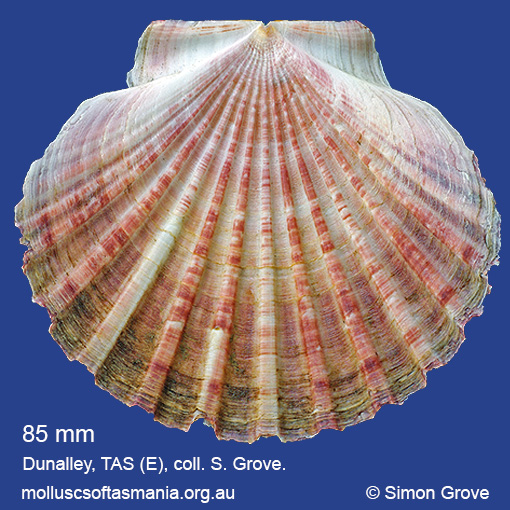
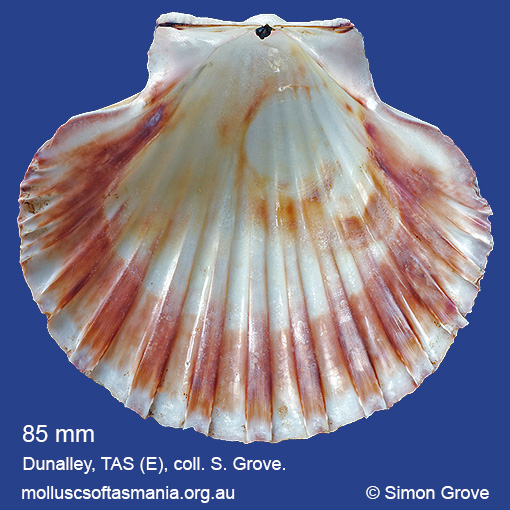
Queen Scallop – Equichlamys bifrons
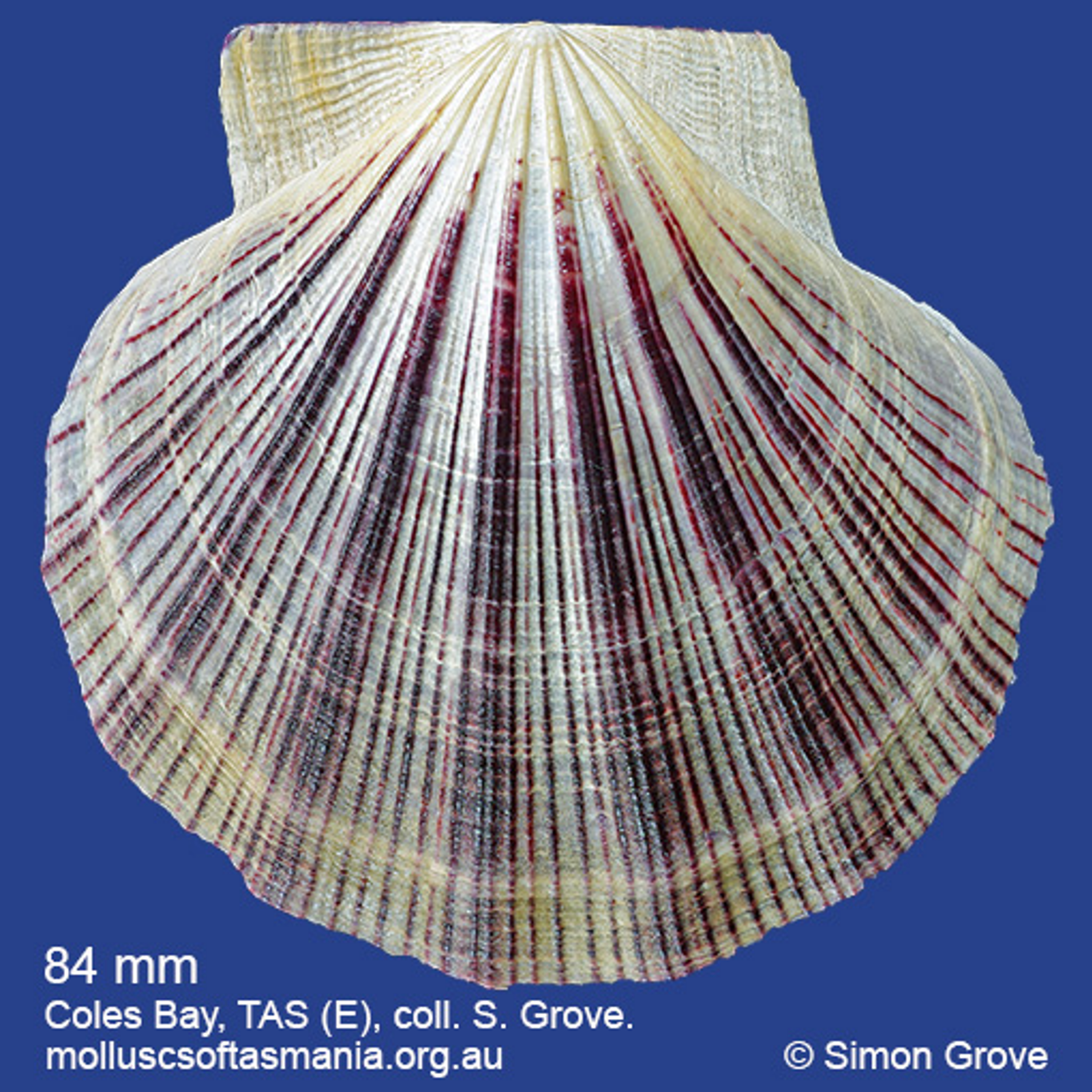
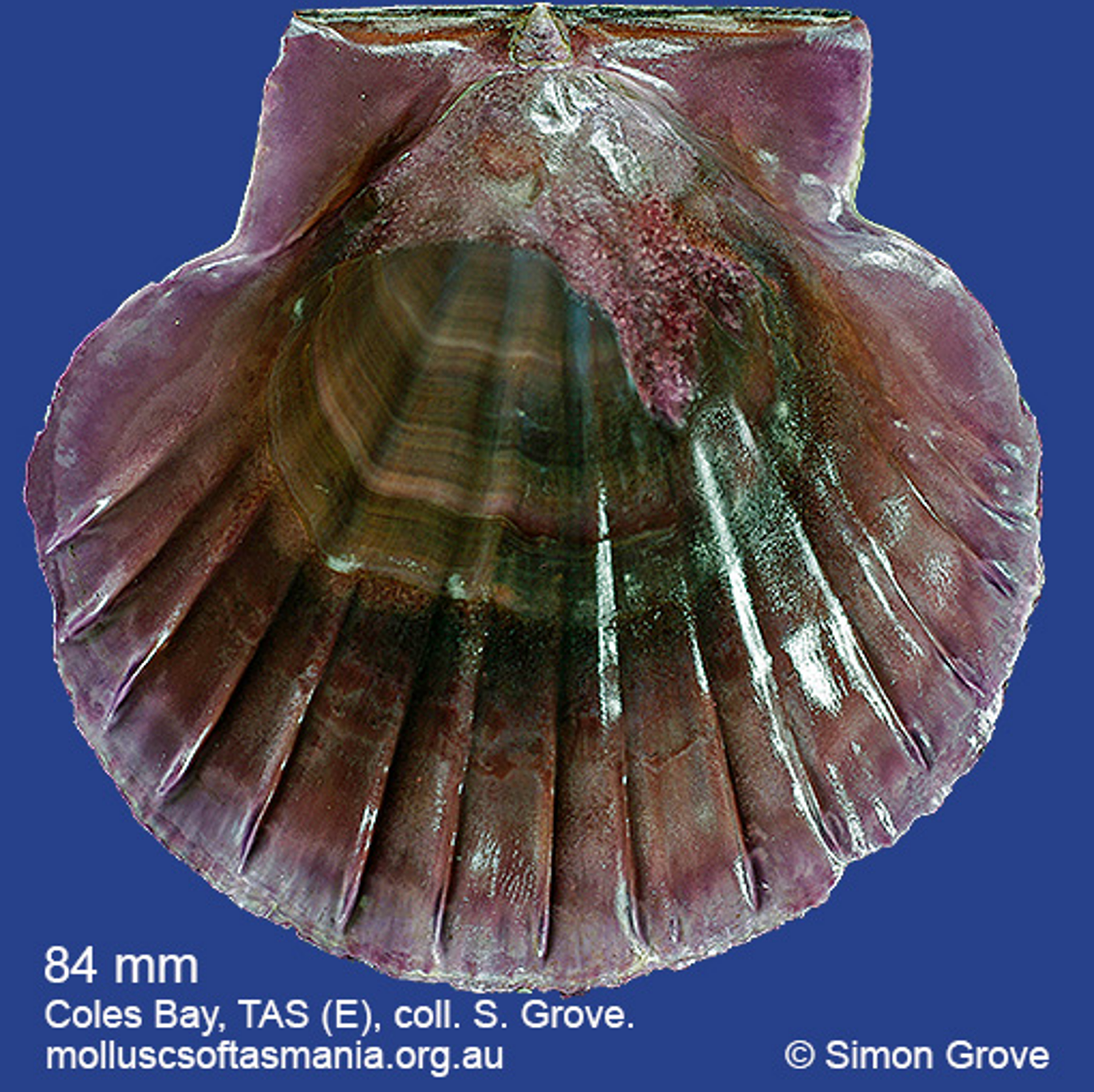
Doughboy Scallop – Mimachlamys asperrima
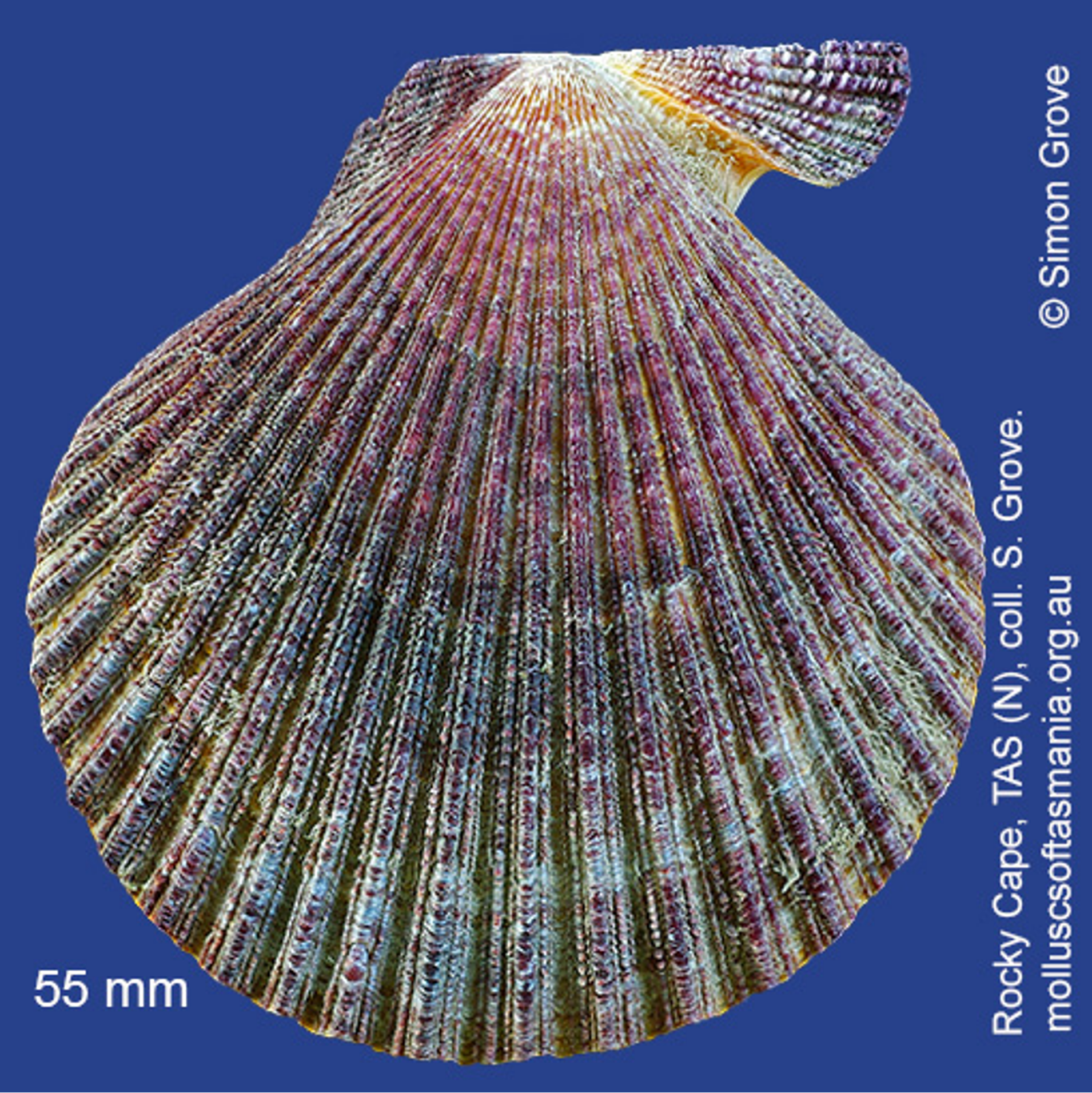
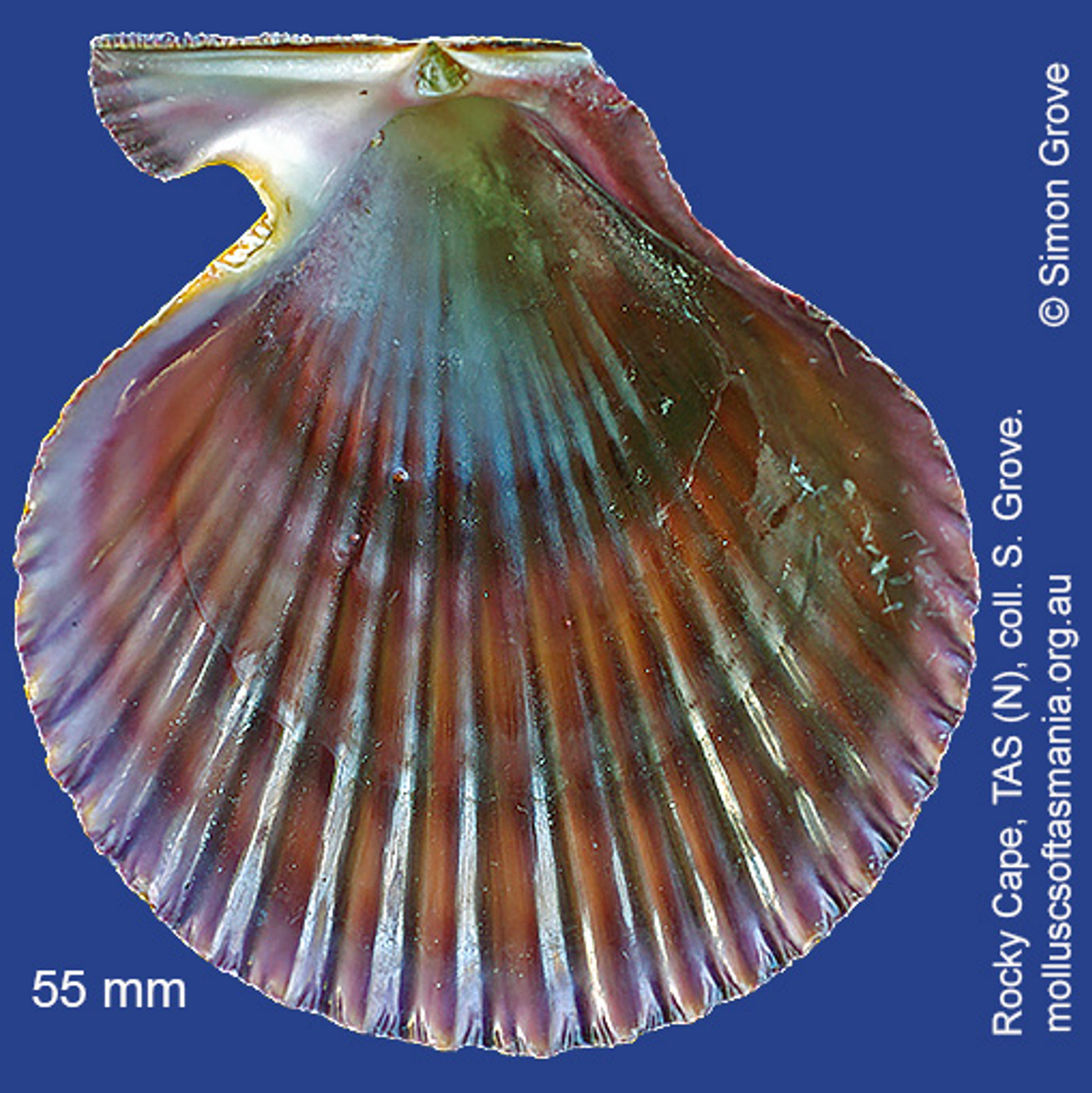
Taken from: The seashells of Tasmania: a comprehensive guide, By Simon Grove



